What is Tectonics?
Tectonics is the study of the Earth's crust and the processes that shape it. This includes the movement of the Earth's lithospheric plates, the formation of mountains and other landforms, and the occurrence of earthquakes and volcanic activity.Plate Tectonics
One of the key concepts in tectonics is plate tectonics, which explains the movement and interaction of the Earth's lithospheric plates. These plates are large pieces of the Earth's crust that float on the semi-fluid asthenosphere below. Plate tectonics is responsible for the formation of mountain ranges, the opening and closing of ocean basins, and the occurrence of earthquakes and volcanic eruptions.Types of Plate Boundaries
There are three main types of plate boundaries: divergent boundaries, where plates move apart; convergent boundaries, where plates move together; and transform boundaries, where plates slide past each other. Each type of boundary is associated with specific geological features and processes.Mountain Building
Tectonics also plays a key role in the formation of mountains. Mountains can form through the collision of tectonic plates, as well as through the uplift of crustal blocks due to tectonic forces. Understanding mountain building processes is important for understanding the Earth's topography and for resource exploration.Earthquakes and Volcanoes
Tectonics is closely linked to the occurrence of earthquakes and volcanic eruptions. Earthquakes are caused by the sudden release of energy along faults in the Earth's crust, which can be related to plate movements. Volcanic eruptions are often associated with tectonic plate boundaries, where magma from the Earth's mantle can reach the surface.Studying Tectonics
[Tectonics] Related Worksheets and Study Guides:
.◂Science Worksheets and Study Guides First Grade. Describe and measure matter
Study Guide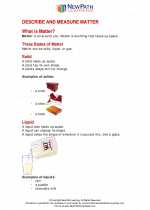 Describe and measure matter
Describe and measure matter  Worksheet/Answer key
Worksheet/Answer key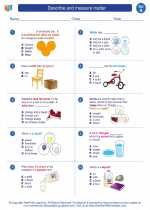 Describe and measure matter
Describe and measure matter  Worksheet/Answer key
Worksheet/Answer key Describe and measure matter
Describe and measure matter  Worksheet/Answer key
Worksheet/Answer key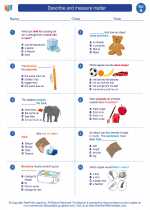 Describe and measure matter
Describe and measure matter  Vocabulary/Answer key
Vocabulary/Answer key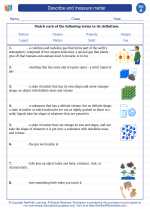 Describe and measure matter
Describe and measure matter  Vocabulary/Answer key
Vocabulary/Answer key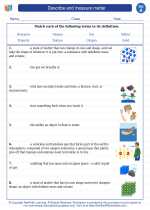 Describe and measure matter
Describe and measure matter 

 Worksheet/Answer key
Worksheet/Answer key
 Worksheet/Answer key
Worksheet/Answer key
 Worksheet/Answer key
Worksheet/Answer key
 Vocabulary/Answer key
Vocabulary/Answer key
 Vocabulary/Answer key
Vocabulary/Answer key

The resources above cover the following skills:
Concepts of Physical Science (SB1, SB2, SB3, SB4)
The student demonstrates an understanding of the structure and properties of matter by classifying matter according to physical properties (i.e., color, size, shape, weight, texture, flexibility).